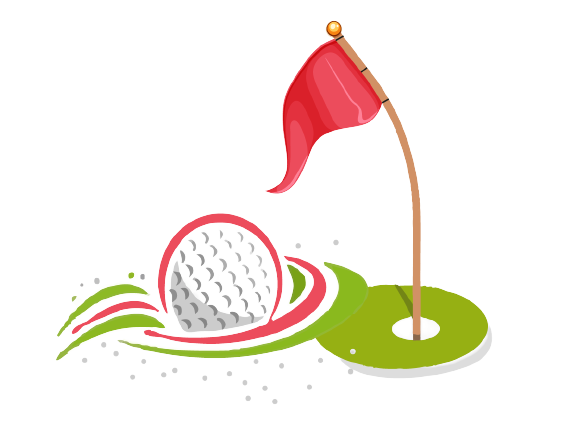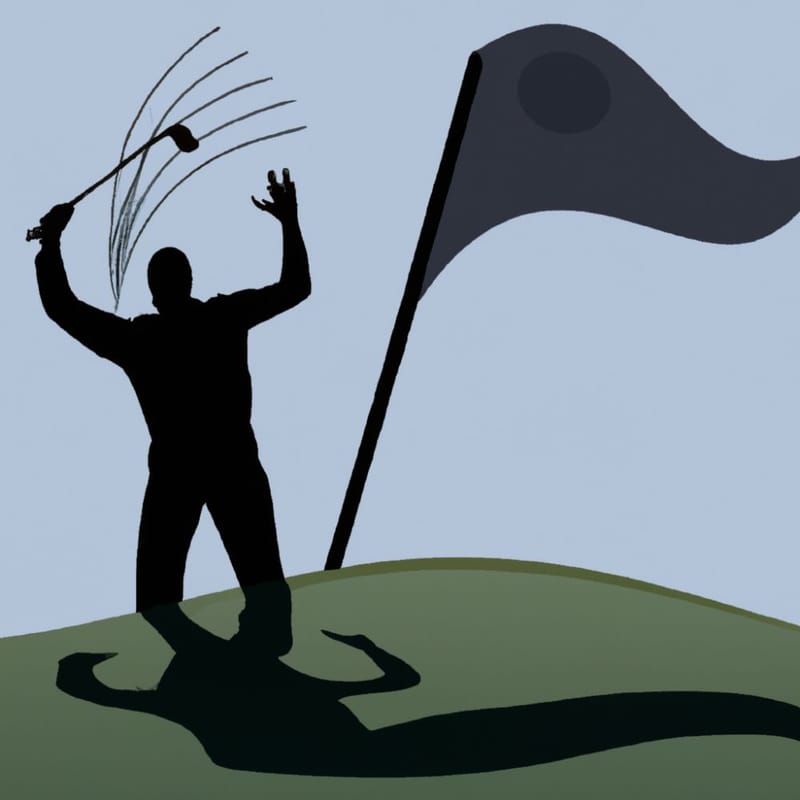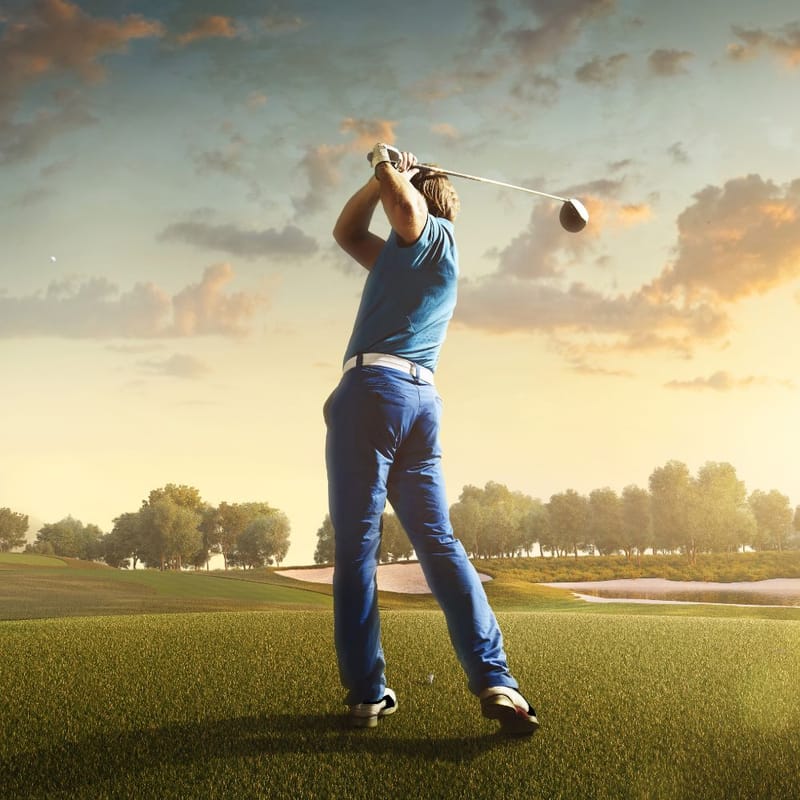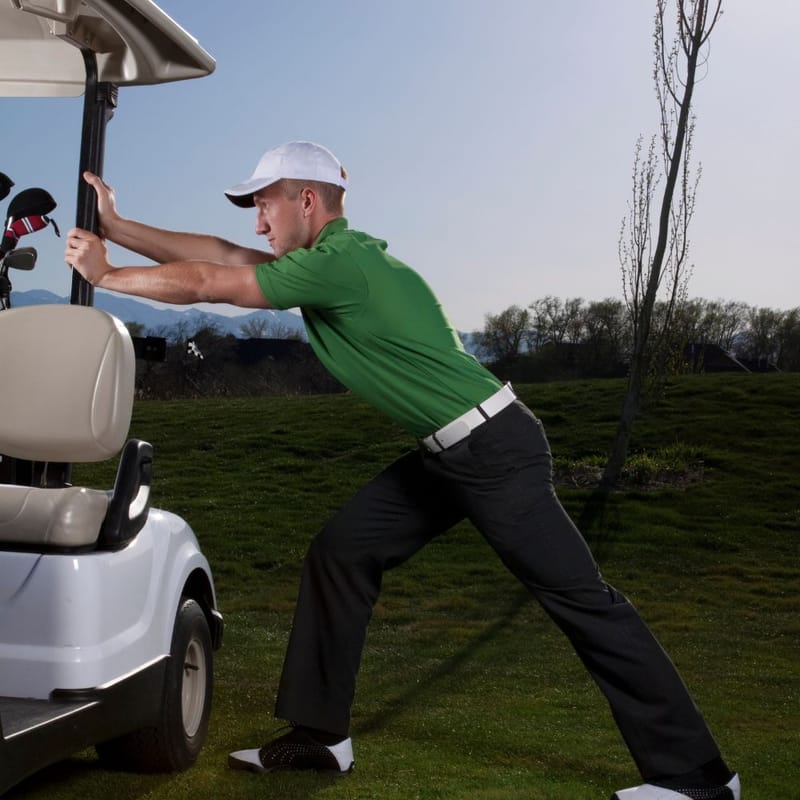Content Summary
Golf is a game of precision, and nothing can be more frustrating when you play golf than hitting a shot that goes in the opposite direction of your intended target. This phenomenon is known as the double cross in golf, and it can wreak havoc on your game. But fear not, because I'm here to share some tips on how you can easily fix hitting a double-cross and get your shots back on track.
Key Takeaways:
- Understand ball flight laws and how the swing path and clubface at impact affect shot direction.
- Address mechanical issues by improving your setup, grip, and alignment to hit the ball.
- Evaluate your equipment's compatibility with your swing mechanics and shot-making goals.
- Commit fully to your target and develop a consistent pre-shot routine.
- Focus on mastering one shot shape to achieve consistency and eliminate the double cross.
Understanding Ball Flight Laws (Swing Path 101)
Before delving into the technical aspects of overcoming the double cross in golf, it is essential to grasp the fundamental concepts of ball flight laws. These laws dictate how the direction and shape of the golf shot are determined by the swing path and the clubface's position at impact.
The clubface plays a significant role in shaping the shot. If the face is open at impact, it will result in a fade, where the ball veers gently from left to right (for right-handed golfers). Conversely, a closed clubface will produce a draw, which causes the ball to gently curve from right to left.

Draw vs Fade
Your swing path also influences the shot shape. An inside-out swing path will result in a "push," where the ball travels straight but to the right of the target. Conversely, an outside-in swing path will lead to a "pull," causing the ball to go straight but to the left of the target.
To fix the double cross, it is crucial to understand these interconnections between the swing path, clubface, and resultant ball flight. By acknowledging the impact of these factors, golfers can make the necessary adjustments to achieve their desired shot shapes.
Types of Golf Shots
| Clubface at Impact | Shot Shape |
|---|---|
| Open | Fade |
| Closed | Draw |
| Swing Path | Shot Shape |
|---|---|
| Inside-out | Push |
| Outside-in | Pull |
Addressing Mechanical Issues
Mechanical issues can contribute to the occurrence of a double cross. Problems with the setup, grip, and alignment can affect the swing mechanics such as backswing and downswing and the position of the clubface at impact. Making adjustments in these areas is key to reducing the chances of a double cross.
Let's start with the setup. Proper setup ensures that you are in the optimal position to execute your swing. Here are a few key points to keep in mind:
- Position your feet shoulder-width apart.
- Align your body parallel to the target line.
- Distribute your weight evenly between both feet.
- Maintain a slight bend in your knees and relax your arms.
Next, let's talk about the grip. The way you hold the club can have a significant impact on your swing mechanics. Here are some grip tips to improve your swing:
- Place the club in the fingers, not the palm of your hand.
- Ensure both hands work together by connecting the thumbs and forming a V shape.
- Maintain a firm, but relaxed grip.
Now, let's focus on alignment. Proper alignment helps ensure that you are aiming correctly and setting up for a successful shot. Consider the following when aligning yourself:
- Choose a target in the distance and align your body parallel to it.
- Check your alignment periodically throughout your swing to ensure you are staying on target.
- Use alignment aids, such as alignment sticks, to help you find your target line.
By addressing these mechanical issues -- the setup, grip, and alignment -- you can improve your swing mechanics and reduce the chances of a double cross. Take the time to practice and make these adjustments, and you'll be on your way to more consistent and accurate shots.
Improving Your Swing Path and Clubface Control
Aside from the setup, grip, and alignment, two key factors that directly impact the occurrence of a double cross are the swing path (this is where I struggle) and the position of the clubface at impact.
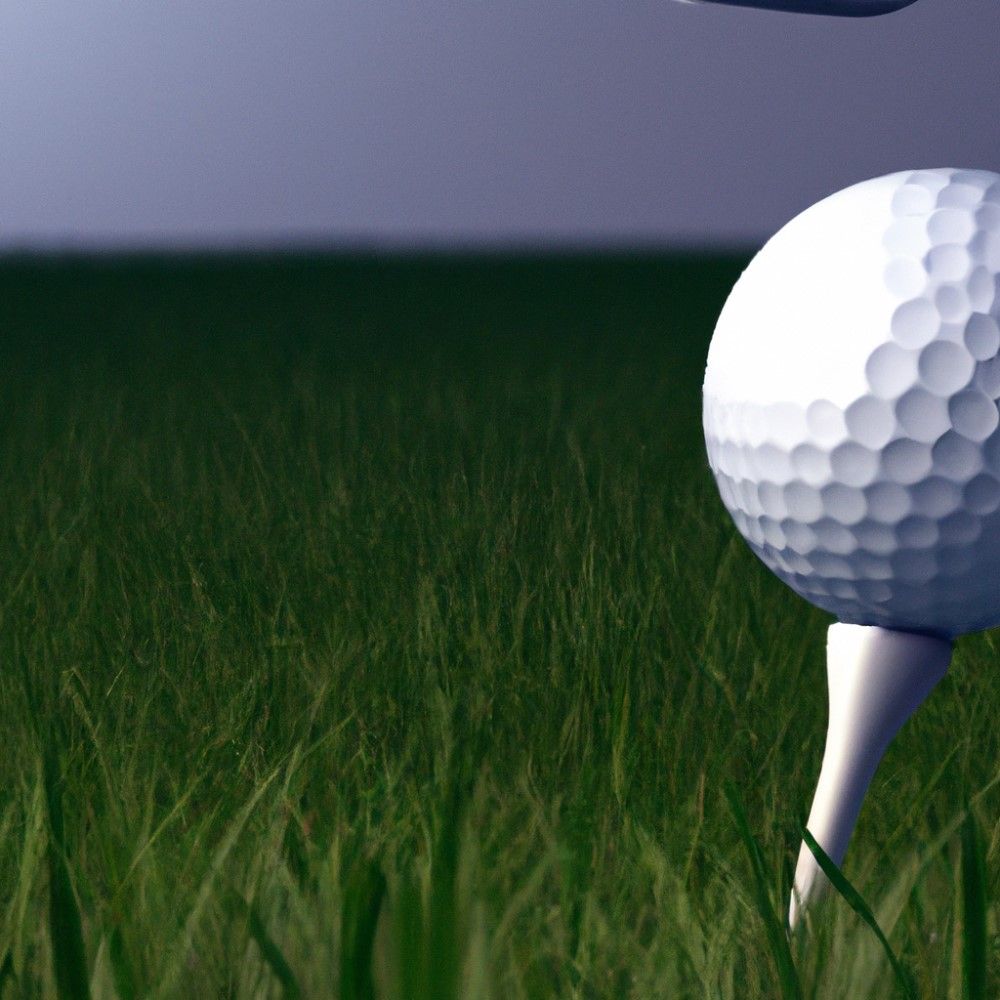
Draw vs Fade Golf
Let's dive deeper into these aspects:
Swing path refers to the direction the clubhead is traveling during the swing. It plays a crucial role in determining the direction and shape of your shots. The swing path can be categorized as either inside-out or outside-in.
An inside-out swing path, when the clubhead approaches the ball from inside the target line, can lead to a push. On the other hand, an outside-in swing path, when the clubhead approaches the ball from outside the target line, can result in a pull.
Clubface control is equally important. The position of the clubface at impact largely determines the initial direction of the shot. If the clubface is closed, the ball will typically fade or even double cross. If the clubface is open, the ball may draw or even double cross.
To fix any swing path or clubface issues, it's crucial to work with a qualified golf instructor who can analyze your swing and provide specific drills and exercises to help you improve. Practicing these drills and focusing on your swing path and clubface control will significantly reduce the chances of a double cross.
Evaluating Equipment Compatibility
Playing with the right equipment is crucial in golf, as it can greatly impact your performance and shot execution. Using clubs that are not suitable for your swing and desired shot shape can increase the likelihood of a double cross, leading to inconsistent ball flight and frustration on the course.

Best Mens Golf Clubs
One important factor to consider when evaluating equipment compatibility is club selection. Choosing the right clubs based on your swing mechanics and shot-making goals is essential. For example, if you are trying to hit a fade, using clubs with draw bias can make it more difficult to achieve the desired shot shape and increase the chance of a double cross.
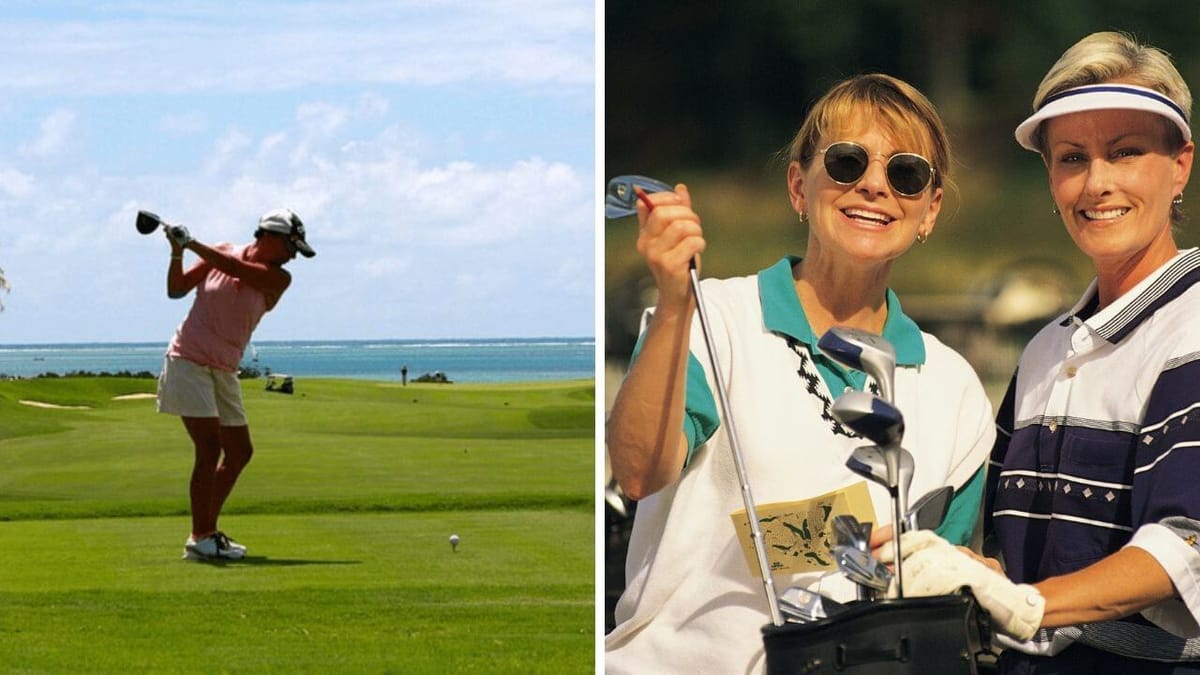
Best Womens Golf Clubs
Additionally, the workability of your irons plays a significant role in controlling and shaping your shots. Some irons are designed to provide more forgiveness and help with distance, while others offer greater workability for shot shaping. Using forgiving irons when trying to shape shots can lead to inconsistent ball flight, making it important to select irons that match your desired shot shape and playstyle.
By evaluating your equipment and making adjustments, you can ensure compatibility with your swing mechanics and improve your chances of avoiding a double cross. Here are some tips for evaluating equipment compatibility:
- Assess your swing: Analyze your swing mechanics and shot tendencies to identify any specific needs or preferences in terms of shot shape.
- Consult with a professional: Seek guidance from a golf professional or club fitter who can evaluate your swing and help you choose the right equipment.
- Research club options: Take the time to research different club models and their characteristics to find the ones that best align with your swing and shot-making goals.
- Test clubs: Whenever possible, try out different clubs on the driving range or during a club fitting session to assess their performance and suitability for your swing.
- Consider adjustability: If you already have clubs that are not perfectly suited for your swing, explore the possibility of adjusting them through custom fittings or using adjustable features.
Remember, using the right equipment that matches your swing mechanics and shot-making goals is an important step towards minimizing the chances of a double cross and improving your overall performance on the golf course.
Committing to the Target
When it comes to avoiding the dreaded double cross in golf, committing to your target and shot shape is key. Professional golfers understand the importance of this commitment and the impact it can have on their game. By developing a consistent pre-shot routine and visualizing the desired shot shape, you can increase your chances of executing the shot as planned.
Committing to the target line ensures that your focus remains on where you want the ball to go. It helps you overcome any doubts or second-guessing that might creep in during the swing. When you commit fully to your target, you set yourself up for success and increase the likelihood of hitting the desired shot shape.
Developing a routine can greatly assist in maintaining commitment throughout the entire shot process. A routine provides a sense of familiarity and calmness, allowing you to focus on the task at hand. Whether it's a specific number of practice swings, a deep breath, or a visualization exercise, find a routine that works for you and stick to it.
Remember, commitment is not just physical, but also mental. It's about trusting your instincts and allowing yourself to fully embrace the shot. By committing to your target and shot shape, you tap into the power of your mind and set yourself up for success on the course.
In addition to commitment, maintaining a positive mindset is crucial. The mental game in golf plays a significant role in overall performance. By staying focused, managing distractions, and believing in your abilities, you can enhance your mental strength and increase the likelihood of executing your desired shot.
Visualization is a powerful tool in the mental game of golf. As you prepare to hit a shot, take a moment to visualize the trajectory and shape you intend to create. Picture the ball soaring toward your target, exactly as you envision it. This mental imagery reinforces your commitment and helps you execute the shot with confidence.
Commitment to the target and shot shape is a fundamental aspect of successful golf. By developing a routine, embracing a positive mindset, and using visualization techniques, you can strengthen your commitment and improve your overall game. Remember, golf is as much a mental sport as it is physical, and with dedication and practice, you can conquer the double cross and achieve consistent, accurate shots.
Golf Shot Shapes
Staying with One Shot Shape
Trying to play multiple shot shapes can lead to inconsistency and a higher chance of a double cross. As a golfer, I've learned the importance of sticking to one shot shape, whether it's a draw or a fade, regardless of the hole or pin location. By focusing on mastering one shot shape and using it consistently, you can improve your control and reduce the risk of a double cross. I have found that most golfers prefer to play a draw.
Consistency is key in golf, and by honing in on one shot shape, you can develop a more reliable and repeatable swing. Professional golfers like Tiger Woods and Jack Nicklaus are known for their signature shot shapes that they've executed with precision throughout their careers. They understand that by specializing in one shot shape, they can better control their ball flight and stay consistent under pressure.
When you commit to one shot shape, you can fine-tune your swing mechanics to consistently produce that specific ball flight. By practicing and ingraining the techniques required for your chosen shot shape, you'll develop muscle memory and enhance your ability to hit the shot on demand.
Playing a consistent shot shape also allows you to better manage the course and strategize your game plan. Instead of constantly adjusting your aim and approach based on different shot shapes, you can rely on your tried-and-true shot to navigate hazards, position yourself for optimal scoring opportunities, and confidently attack pins.
Benefits of Sticking to One Shot Shape:
- Improved consistency: By eliminating the variables associated with multiple shot shapes, you can achieve greater consistency in your ball striking.
- Enhanced control: Mastering one shot shape allows you to have more control over your ball flight, enabling you to hit specific targets with precision.
- Elevated confidence: When you know exactly how your ball will behave, you can approach each shot with confidence, reducing doubt and increasing your chances of success.
- Strategic advantage: Your chosen shot shape can become a powerful weapon, allowing you to strategically navigate the course and capitalize on your strengths.
Staying committed to one shot shape requires practice, dedication, and the willingness to resist the temptation of experimenting with different shot shapes on the course. Through deliberate repetition and a focus on consistency, you can harness the power of your preferred shot shape and avoid the pitfalls of the double cross.
Power Fade
Improving Wrist Action
Proper wrist action is essential for controlling the ball's flight and avoiding a double cross in golf. By mastering the technique of wrist rotation, you can enhance your clubface control, enabling you to execute accurate shots with the desired shape.
Wrist rotation refers to the movement of the wrists during the golf swing. It determines the position of the clubface at impact, which directly affects the direction the ball will take. Early wrist rotation can cause the clubface to close, resulting in a hook instead of the intended fade. To prevent this, it's important to focus on timing your wrist action.
Here are some tips to improve your wrist action and minimize the chances of a double cross:
- Practice proper wrist mechanics: Training aids and drills can help you develop a better understanding of how the wrists should move throughout the swing. Work on maintaining a firm, controlled grip and allowing your wrists to hinge naturally in the backswing.
- Focus on clubface control: Pay attention to the position of the clubface throughout the swing, especially at impact. Visualize the desired shot shape and make subtle adjustments with your wrists to align the clubface accordingly.
- Experiment with grip pressure: Find the right balance between a tight grip and a relaxed one. Excessive tension in the wrists can restrict their movement and hinder clubface control.
Remember, consistency is key when it comes to improving wrist action. Regular practice and conscious effort to refine your technique will yield positive results over time. By honing your wrist rotation skills, you'll have greater control over the clubface and be better equipped to execute the draw or fade you desire.
Drill for Improving Wrist Rotation
| Drill | Description |
|---|---|
| Wrist Hinge Drill | Hold a club at waist height with one hand and focus on hinging your wrist backward. Maintain the hinge as you swing the club back and through, ensuring a full range of motion. |
| Alignment Stick Drill | Place an alignment stick or club along your target line. During the swing, focus on keeping the clubface parallel to the stick at impact, maintaining proper wrist rotation to achieve the desired shot shape. |
| Slow Motion Swing | Practice your swing in slow motion, paying close attention to the movement of your wrists. This drill allows you to develop muscle memory and improve the timing and control of your wrist action. |
By incorporating these drills into your practice routine, you can refine your wrist rotation and achieve better clubface control. With improved wrist action, you'll have a greater ability to shape your shots and minimize the chances of a double cross in your golf game.
Emphasizing Routine
A consistent pre-shot routine is crucial in golf for maintaining focus and minimizing the chances of a double cross. Having a routine helps me confirm the distance, select the best target, visualize the shot, and maintain a positive mindset. By incorporating a pre-shot routine and post-shot process into my game, I can improve my mental game and minimize the impact of a double cross on my overall performance.
My pre-shot routine begins with visualizing the shot I want to hit. I imagine the trajectory, the shape, and the landing spot. This mental picture helps me align my mind and body to execute the shot with confidence. Next, I take a deep breath to calm my nerves and clear my mind. This moment of focus is crucial for me to let go of any distractions or negative thoughts that may hinder my performance.
Once I step into my setup position, I pay careful attention to my alignment. Proper alignment ensures that my body and clubface are pointing in the right direction to hit my intended target. I align my feet, hips, and shoulders parallel to the target line, and I also check that the clubface is square to my target. This alignment not only increases my chances of hitting the shot on target but also sets the foundation for a consistent swing path.
As I approach my shot, I take a few practice swings to feel the rhythm and tempo of my swing. This helps me find a comfortable and repeatable motion that I can trust. I focus on swinging through the ball with conviction and committing to my desired shot shape. By staying committed and confident in my swing, I reduce the likelihood of second-guessing myself and making a double cross mistake.
Another crucial aspect of my routine is my shot process. Before I initiate my swing, I take one final look at my target and reaffirm my intention to hit the shot as planned. This moment of clarity and conviction reinforces my focus and allows me to execute the shot with precision. After hitting the shot, I stay engaged by observing the ball flight and reflecting on the result. This post-shot process helps me learn from each shot and make any necessary adjustments for future shots.
A consistent pre-shot routine not only helps me physically prepare for each shot but also enhances my mental game. It establishes a sense of rhythm, focus, and confidence that carries throughout the round. By incorporating alignment, visualization, commitment, and reflection into my routine, I can navigate the challenges of the game and significantly reduce the chances of a double cross.
Having a structured routine not only improves my performance but also adds an element of consistency to my game. It allows me to enter a state of flow, where I can seamlessly execute shots without overthinking. The pre-shot routine acts as a mental anchor, grounding me in the present moment and helping me stay focused on the task at hand.
Conclusion
Conquering the double cross in golf requires a combination of technical adjustments, equipment evaluation, mental focus, and commitment to the desired shot shape. By addressing the factors that contribute to a double cross and implementing the strategies outlined in this article, you can improve your consistency and accuracy on the golf course.
First and foremost, it's crucial to understand the ball flight laws and the impact of swing path and clubface position at impact. This knowledge will help you identify the root causes of the double cross and make necessary corrections. Additionally, addressing any mechanical issues like setup, grip, and alignment will significantly improve your swing mechanics and reduce the chances of a double cross.
Furthermore, evaluating the compatibility of your equipment with your desired shot shape is essential. Choosing the right clubs, such as those with the appropriate draw bias or workability, can enhance your ability to consistently execute your desired shots. Committing to the target and developing a consistent pre-shot routine will also help you stay focused and eliminate second-guessing, leading to more desirable outcomes.
Ultimately, by improving your wrist action, emphasizing routine, and practicing with consistency, you can fix the double cross and achieve greater accuracy and reliability in your golf game. Remember, it may take time and patience to eliminate the double cross, but with perseverance and the right strategies, you can overcome this challenge and become a more consistent golfer.
FAQ's - Golf's Double Cross
What is a double cross in golf?
A double cross in golf refers to a shot where the ball goes in the opposite direction of where the player intended. For example, if a golfer is trying to hit a draw but instead the ball goes to the opposite side, it's considered a double cross.
What are the causes of a double cross in a golf swing?
The causes of a double cross in a golf swing can include a closed club face, aiming left when the ball goes right, or trying to hit a draw but ending up hitting a fade or a straight shot instead. It often results from the player's attempt to work the ball but ends up with a bad swing.
How can I avoid hitting a double cross in my golf game?
To avoid the double cross in golf, it's important to work on your ball position, clubface alignment, and body rotation during the swing. Ensuring that your alignment is correct and not aiming too far left or right can help improve your chances of avoiding a double cross.
What adjustments can I make in my golf swing to help avoid the double cross?
Making adjustments to your golf swing such as setting up to hit a draw, focusing on a straighter backswing, and aiming more precisely can help improve your chances of avoiding a double cross in your shots.
Can a closed club face lead to a double cross in golf?
Yes, a closed club face at impact can lead to a double cross in golf, causing the ball to go in the opposite direction of where the player intended. Ensuring that the club face is square at impact is crucial to avoid hitting a double cross.
How does aiming left or right affect the likelihood of hitting a double cross in golf?
Aiming too far left or right can significantly increase the likelihood of hitting a double cross in golf. It's important to aim correctly in accordance with the shot you intend to make to reduce the risk of a double cross.
What role does ball position play in preventing a double cross in golf?
Ball position plays a crucial role in avoiding a double cross in golf. Ensuring that the ball is positioned correctly in your stance can help improve the chances of hitting the desired shot without falling victim to a double cross.
How can I work on my golf swing to prevent hitting a double cross?
Working with a golf coach to analyze and improve your swing mechanics can help prevent hitting a double cross. Focusing on proper body rotation, swing speed, and clubface control can also help minimize the chances of a double cross occurring in your shots.
What strategies can I employ to recover from hitting a double cross in golf?
If you hit a double cross in golf, it's important not to dwell on the mistake. Instead, focus on adjusting your approach for the next shot, and consider using a high-quality golf ball or tee to help improve your chances of a better shot on the next attempt.
Can using the wrong equipment lead to a double cross in golf?
Using the wrong equipment, such as a golf ball or tee that doesn't suit your swing style, could potentially contribute to hitting a double cross. It's important to have the proper equipment and accessories to best support your game and minimize the chances of a double cross.
Thank you for visiting, and we hope to see you back soon!
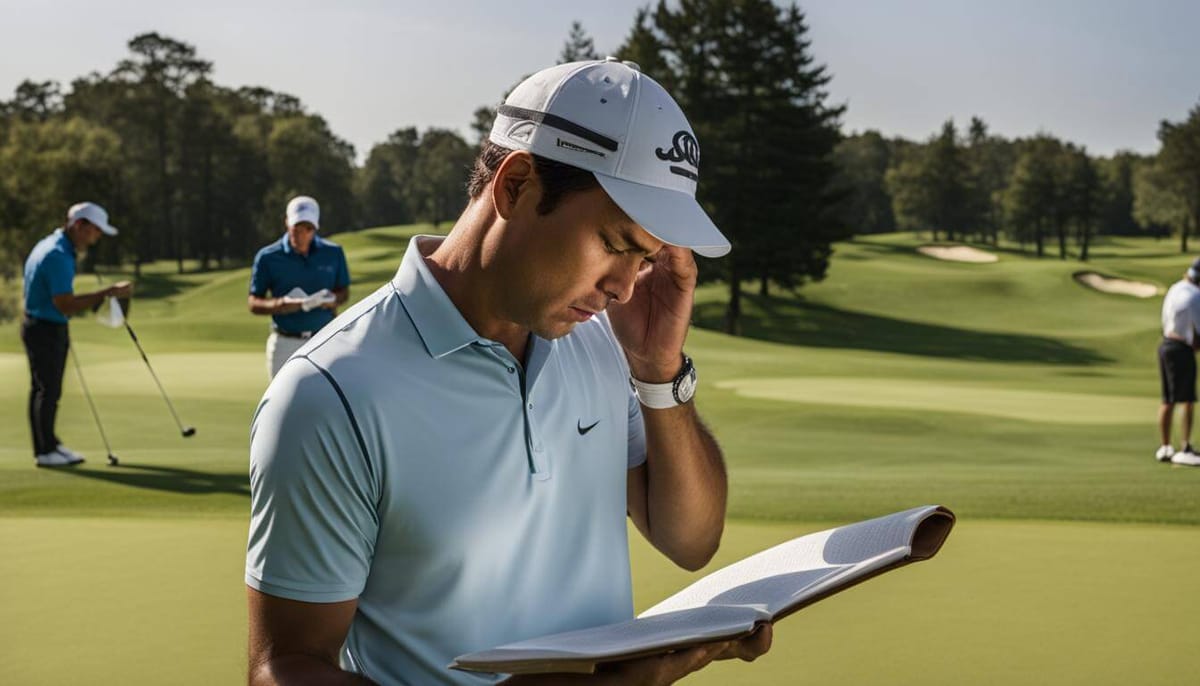
New Golf Rules
